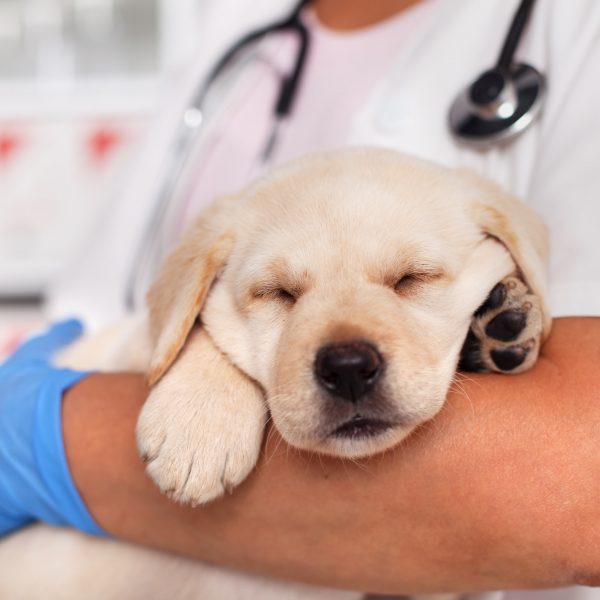What to Know About Glaucoma in Dogs

Just as many diseases can affect humans, many can also affect our dogs. Often, the best defense we have is to learn the signs and symptoms, so we can get our dogs the help they need as soon as possible. Here’s what to know about glaucoma in dogs:
What is Glaucoma?
Glaucoma is an eye disease that occurs in humans and in dogs. It is one of the common eye problems in dogs, especially in senior dogs. An eye with glaucoma will have an increased intraocular pressure, which is the pressure within the eye.
This increased pressure within the eye is painful and also leads to damage to the retina and optic nerve. If left untreated, glaucoma leads to irreversible damage to the eye and blindness.
What Causes Glaucoma in Dogs?
Glaucoma is caused specifically by the inadequate drainage of aqueous fluid within the eye. It is important to note that it is not caused by an overproduction of fluid.
It is also classified into two types – primary glaucoma and secondary glaucoma. Essentially, dogs are born with what can cause primary glaucoma while secondary glaucoma is caused by injury or disease.
Primary Glaucoma
Primary glaucoma is when increased intraocular pressure occurs in a healthy eye. This usually occurs due to anatomical abnormalities in the drainage angle. It is generally attributed to inherited abnormalities in the structure of the eye.
This also means some breeds are more prone to glaucoma than others. Great Danes, Akitas, Cocker Spaniels, Poodles, Basset Hounds, Chow Chows, and more tend to be more prone to this than others. This also makes reputable breeding, screenings, and clearances even more important for these breeds.
Secondary Glaucoma
Secondary glaucoma is when increased intraocular pressure occurs due to an injury or disease to the eye. Eye infections, tumors, and injuries that cause dislocation of the lens, bleeding inside the eye, and damage to the lens can all lead to glaucoma if the drainage angle is blocked.
What Are the Symptoms of Glaucoma in Dogs?
Your dog may show signs of eye pain where they partially close their eye. They may also rub at their eye or even turn away from you if you touch them, especially if you are petting near their head. There may also be watery discharge from the eye.
You might notice obvious swelling or bulging of the eyeball. Additionally, the sclera, the white of the eye, may look red and swollen. You may even notice the clear part of the eye, the cornea, becoming cloudy or turning bluish in color.
Your dog may also be lethargic or unresponsive. They may also experience appetite loss. All of these can happen suddenly with acute glaucoma or could develop over time with chronic glaucoma. Unless intraocular pressure is reduced, blindness can occur quickly.
Some symptoms of glaucoma can also be symptoms of other things in your dog. But, they are also often symptoms you should never ignore in your dog. So, if you see them, it’s important to visit your vet. They will be able to determine what is going on and help your dog.
How Do You Treat Glaucoma in Dogs?
A glaucoma diagnosis depends on an accurate measure of intraocular pressure. A tonometer is often used to measure intraocular pressure. Once glaucoma is diagnosed, it is important to reduce the pressure within the eye as quickly as possible. It’s also important to treat any underlying condition that may be the cause of glaucoma.
Initial treatment usually includes analgesics to decrease pain and discomfort and medications to promote drainage and decrease fluid production. Long-term treatment with medication could involve carbonic anhydrase inhibitors or beta-adrenergic blocking agents. Follow-up monitoring will also be necessary.
If the glaucoma is more advanced or severe, medication is combined with surgical techniques to reduce pressure within the eye and prevent damage. If blindness has developed or medical treatment is not working, the recommendation may be to remove the eye in order to relieve the discomfort and pain.
These are just a few things to know about glaucoma in dogs. Knowing what to look for can help you catch things early and get to the vet and catch things early. This gives your dog the best chance at a good prognosis and allows you to help manage your dog’s symptoms and help them thrive.
